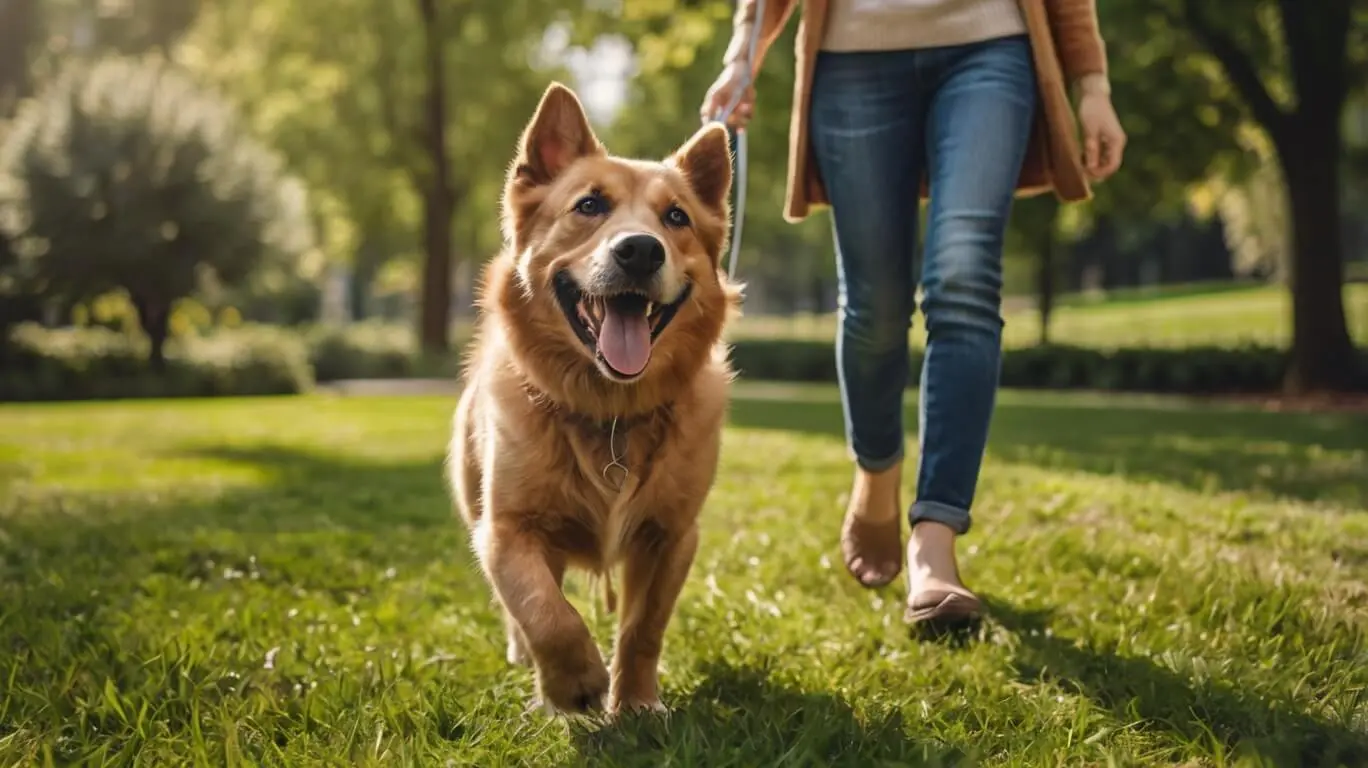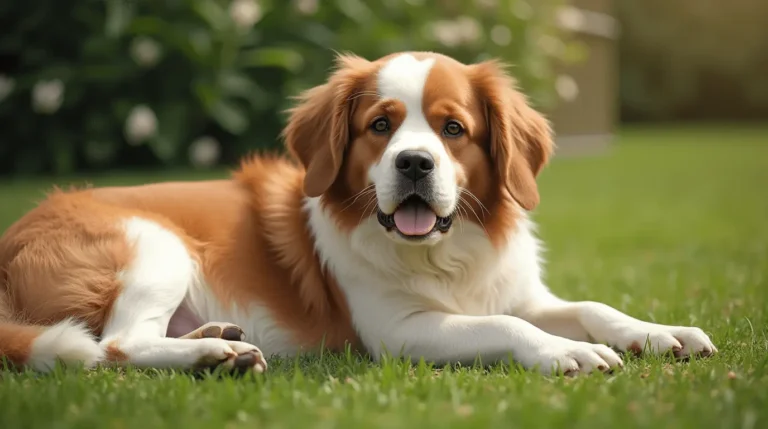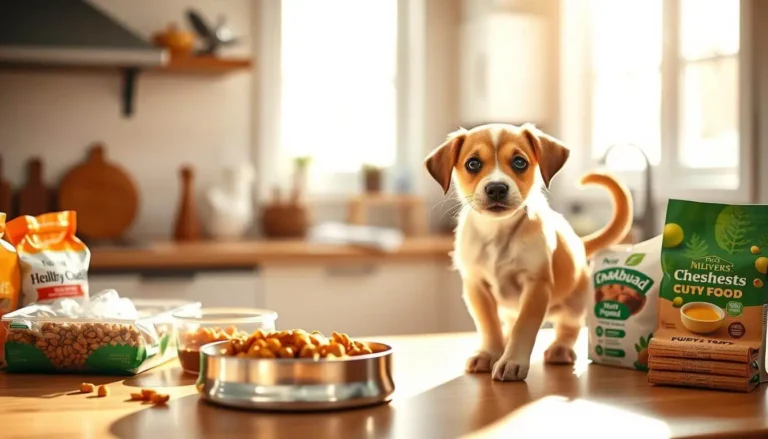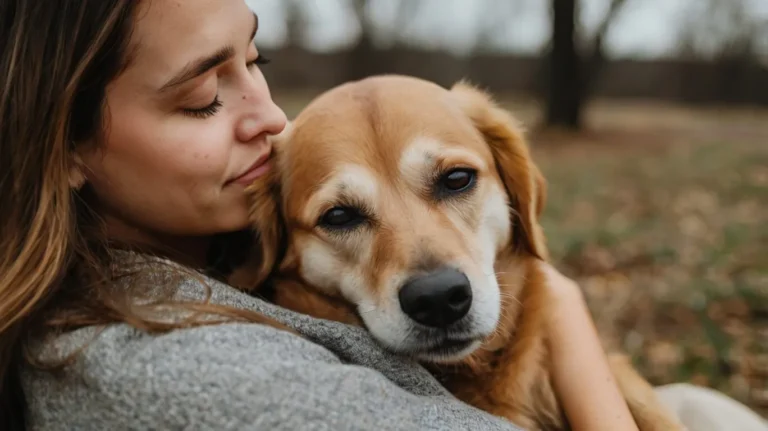What Care Does a Dog Need Daily? Tips for a Happy, Healthy Pup
Bringing a dog into your life is one of the most rewarding experiences—but it also comes with daily responsibilities. You might be wondering, what care does a dog need to live a happy, healthy life? Just like us, dogs thrive on routine, love, and attention. From feeding and exercise to grooming and emotional bonding, every day presents an opportunity to support your furry friend’s well-being.
Whether you’re a new pup parent or just looking to improve your care routine, this guide will walk you through the essential daily needs of a dog. With the right mix of nutrition, activity, hygiene, and mental stimulation, your dog can enjoy a balanced and joyful life by your side.
Let’s dive into the key areas of daily dog care and how you can make each day count for your canine companion.
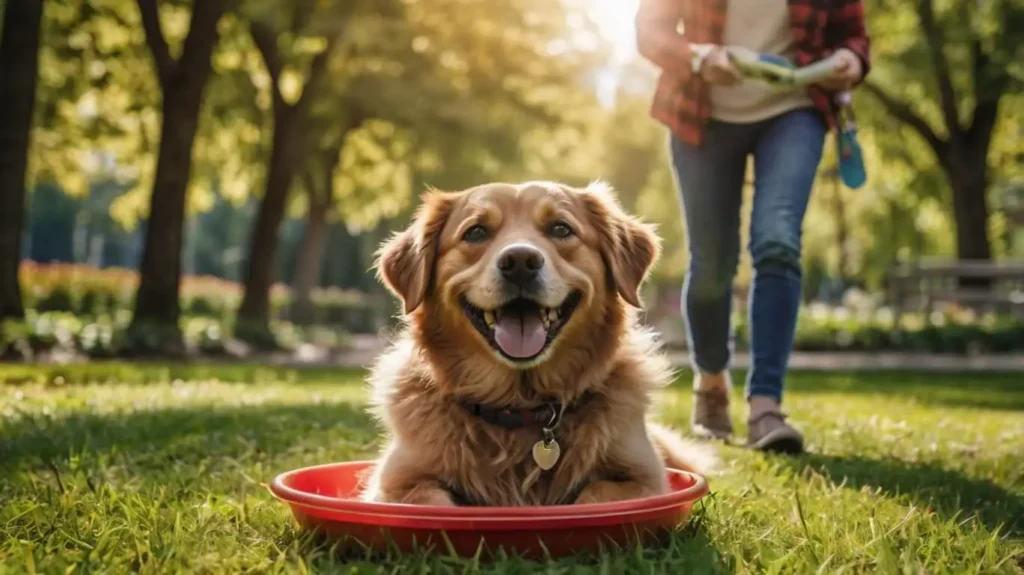
Daily Nutrition and Feeding Needs
Choosing the Right Dog Food
When it comes to keeping your pup healthy and full of energy, choosing the right dog food is one of the most important decisions you’ll make. Every dog is unique, and their nutritional needs can vary greatly depending on their age, breed, size, and activity level.
Start by selecting food that is age-appropriate—puppies, adult dogs, and senior dogs all require different nutrient profiles. For example, puppies need higher levels of protein and fat to support growth, while senior dogs may benefit from foods that support joint health and digestion.
Next, consider any breed-specific requirements. Larger breeds like German Shepherds or Labradors may benefit from formulas that support joint health and mobility, while smaller breeds like Chihuahuas need smaller kibble sizes and calorie-dense meals due to faster metabolisms.
Always look for dog food that contains high-quality, recognizable ingredients. Avoid products with fillers, artificial preservatives, and meat by-products. Look for real meat (like chicken, beef, or salmon) as the first ingredient, along with wholesome grains or grain-free alternatives if your dog has sensitivities.
Some reputable dog food brands trusted by pet owners and veterinarians include Royal Canin, Blue Buffalo, Hill’s Science Diet, and Wellness Core. These brands often offer breed-specific and age-specific formulas, making it easier to tailor your dog’s diet to their individual needs.
Finally, if your dog has allergies, sensitivities, or specific health concerns (like weight management or kidney issues), consult with your veterinarian. They can help you choose a prescription formula or recommend the best over-the-counter options to support your dog’s health.
Establishing a Consistent Feeding Schedule
Once you’ve chosen the right dog food, the next step is just as important: establishing a consistent feeding schedule. Dogs, like humans, thrive on routine. Knowing when to expect their meals helps reduce anxiety, supports digestion, and keeps their energy levels stable throughout the day.
For puppies, frequent feedings are essential. Because they’re growing rapidly, puppies typically need to eat three to four times a day. Small, well-balanced meals help them maintain steady energy and avoid blood sugar drops, especially in smaller breeds.
As your dog matures into adulthood, you can shift to two meals per day—usually once in the morning and once in the evening. This schedule keeps their metabolism balanced and helps prevent overeating. Free-feeding (leaving food out all day) is not recommended for most dogs, as it can lead to weight gain and digestive issues.
Feeding your dog at the same times each day is key. It not only builds trust and predictability but also makes potty training and bowel movements more regular—especially important for puppies and newly adopted dogs. Many pet owners find that meal times also help with training; a hungry dog is often more attentive and motivated to follow commands.
Keep in mind that activity levels matter, too. A highly active breed like a Border Collie or Siberian Husky may need slightly more food or a high-calorie formula, while a less active dog might require portion control to avoid weight gain. Always measure your dog’s food based on the feeding guidelines provided on the package or your vet’s recommendation, and adjust as needed based on their age, weight, and activity level.
Lastly, don’t forget the importance of fresh water at all times. Hydration is just as vital as nutrition and should be part of your daily care routine.
Fresh Water and Treats
While it’s easy to focus on food, fresh water and healthy treats are just as essential to your dog’s daily care. Water keeps your dog hydrated, aids in digestion, helps regulate body temperature, and supports overall health. Dehydration in dogs can lead to serious health issues, including kidney problems and fatigue, so making clean, accessible water a priority is non-negotiable.
Your dog should have unlimited access to fresh, clean water throughout the day—especially after walks, playtime, or meals. Use a clean bowl (preferably stainless steel or ceramic to avoid bacteria buildup) and wash it daily. If you’re away during the day, consider using an automatic water dispenser or pet water fountain, which encourages dogs to drink more by keeping water fresh and circulating.
Now let’s talk about treats—because who doesn’t love to spoil their pup a little? Treats are a great way to reward good behavior, reinforce training, and bond with your dog. But not all treats are created equal. Too many or the wrong kind can lead to weight gain, poor nutrition, or upset stomachs.
Opt for nutritious treats made with high-quality ingredients. Look for options with limited additives and artificial flavors. Treats made with real meat, fruits, or vegetables (like sweet potato, salmon, or blueberries) are excellent choices. For dogs with sensitive stomachs or allergies, grain-free or hypoallergenic treats may be the best fit.
Portion control is key. Treats should make up no more than 10% of your dog’s daily calorie intake. Use small, bite-sized options during training, and save higher-value treats for more rewarding tasks or positive reinforcement during vet visits, grooming, or socializing.
Lastly, don’t forget about dental chews—they serve a dual purpose of rewarding your pup and promoting oral health. Just be sure to choose vet-approved options that are safe and digestible.
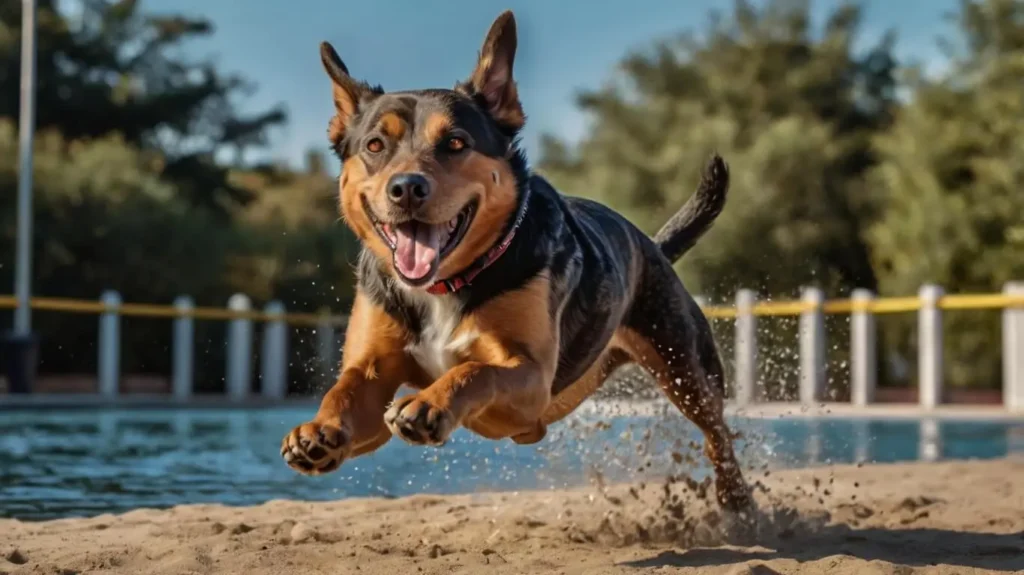
Exercise and Physical Activity
Daily Walks and Playtime
One of the most important ways to support your dog’s overall well-being is through daily walks and playtime. These aren’t just about exercise—they’re essential for your dog’s physical health, mental stimulation, and emotional happiness. A dog that gets regular activity is often calmer, better behaved, and less prone to anxiety or destructive habits.
Daily walks provide more than just a bathroom break. They give your dog a chance to explore the world through sights, sounds, and most importantly—smells! Sniffing during walks is mentally enriching and taps into their natural instincts. Ideally, dogs should be walked at least once or twice a day, depending on their breed, age, and energy level. High-energy breeds like Border Collies, Huskies, or Boxers may need longer or more frequent walks, while smaller or older dogs might be content with shorter strolls.
Use a well-fitted collar or harness, and always bring along a leash, poop bags, and water—especially on longer outings or warmer days. For extra mental stimulation, switch up your routes or include occasional visits to the dog park for off-leash fun and socialization, if your dog is well-socialized and safe around other pups.
Alongside walks, daily playtime is just as vital. It provides a great outlet for pent-up energy, encourages bonding, and sharpens your dog’s cognitive and motor skills. Classic games like fetch, tug-of-war, or a good old-fashioned chase session in the backyard can work wonders. For indoor fun, use interactive toys or puzzle feeders that challenge your dog to think and work for treats.
Play sessions don’t need to be long—just 15 to 30 minutes of quality playtime can do the trick. The key is consistency and variety. Dogs thrive when they have a routine that balances both physical activity and mental engagement.
Remember: a tired dog is a happy dog. Regular walks and play help reduce boredom, anxiety, and unwanted behaviors like chewing, barking, or digging—making them a crucial part of your daily care routine.
Breed-Specific Activity Requirements
While all dogs need daily exercise, the type and amount of physical activity they require can vary greatly depending on their breed, size, age, and energy level. Understanding your dog’s breed-specific activity requirements is key to keeping them healthy, both physically and mentally.
For example, high-energy working breeds like Border Collies, Australian Shepherds, Belgian Malinois, and Labrador Retrievers were originally bred to perform tasks all day long. These dogs typically require at least 60–90 minutes of vigorous exercise daily. Without enough physical and mental stimulation, they may become bored, anxious, or even destructive.
On the other hand, toy and companion breeds like Pugs, Shih Tzus, or Chihuahuas don’t need nearly as much structured exercise. A couple of short walks and some light indoor play each day are usually enough. However, they still benefit from mental stimulation and regular interaction to stay happy and fit.
Brachycephalic breeds (short-nosed dogs like Bulldogs or French Bulldogs) require special care during exercise. They can overheat easily and may struggle with breathing, especially in warm or humid weather. For these dogs, short, gentle walks during cooler times of day and indoor play sessions are often ideal.
Senior dogs, regardless of breed, may have reduced stamina or joint issues, so their exercise routines should be adjusted accordingly. Gentle walks, swimming, or light play can help maintain mobility without putting stress on aging joints.
When planning your dog’s exercise routine, keep in mind:
- Age and health conditions
- Temperament and motivation level
- Weather and environment (e.g., hot pavement can burn paws, cold may require jackets for small or short-haired breeds)
If you’re unsure how much activity your dog really needs, ask your veterinarian for guidance, especially if your pup has special needs or health concerns.
Tailoring your dog’s daily activity to their specific breed and personality not only keeps them fit—it helps prevent behavioral problems, strengthens your bond, and gives them a more fulfilling life.
Indoor Play and Enrichment
While outdoor walks and playtime are essential, indoor play and enrichment are just as important—especially when the weather doesn’t cooperate, or you live in a space with limited outdoor access. Dogs, like humans, need variety in their activities to keep both their minds and bodies stimulated. Indoor play can be a great way to prevent boredom, keep your dog active, and even reinforce training.
For high-energy dogs, indoor play is an excellent way to burn off excess energy when you can’t get outside. Games like fetch can be modified for indoors with soft toys or a lightweight ball that won’t damage furniture or breakable items. If space is limited, consider playing tug-of-war with a rope toy or engaging in a fun game of hide and seek—either hiding treats around the room or having your dog find you.
Puzzle toys and interactive feeders are fantastic for mental stimulation. These toys challenge your dog to think, work, and problem-solve in order to access treats or food. Popular options include the KONG toys, which you can fill with peanut butter, treats, or even frozen food, and snuffle mats, which encourage your dog to use their sense of smell to find hidden snacks. These toys not only entertain but also tire your dog out mentally, which is just as important as physical exercise.
Another great form of enrichment is training sessions. Using positive reinforcement, you can teach your dog new tricks, reinforce obedience commands, or practice agility exercises indoors. Training doesn’t just improve behavior—it provides a mental workout that is incredibly rewarding for your dog. Short, frequent sessions (around 10–15 minutes) help keep them engaged and provide a sense of accomplishment.
For dogs that are more independent or older, chew toys can be a good alternative. Durable, safe chew toys like Nylabone or Bully Sticks can help relieve anxiety, keep their teeth clean, and occupy them for long periods of time. Just make sure the toys are suitable for your dog’s size and chewing habits to avoid choking hazards.
Don’t forget about sensory enrichment! Set up a mini obstacle course with household items like pillows, chairs, or low tables to encourage your dog to jump, crawl, and navigate. You can also introduce them to new scents, sounds, and textures by swapping out their bedding or adding a few new toys to rotate through their collection. These little changes can create a sense of novelty and excitement in an otherwise familiar environment.
Lastly, if you have a smart device like a treat-dispensing camera, it can help engage your dog when you’re away, providing them with both entertainment and rewards for good behavior.
Indoor play and enrichment not only provide exercise when you can’t get outside—they also help prevent destructive behavior, like chewing furniture or excessive barking, by keeping your dog mentally and physically occupied. With a little creativity and a variety of toys and activities, you can keep your dog happy and stimulated no matter the weather outside.
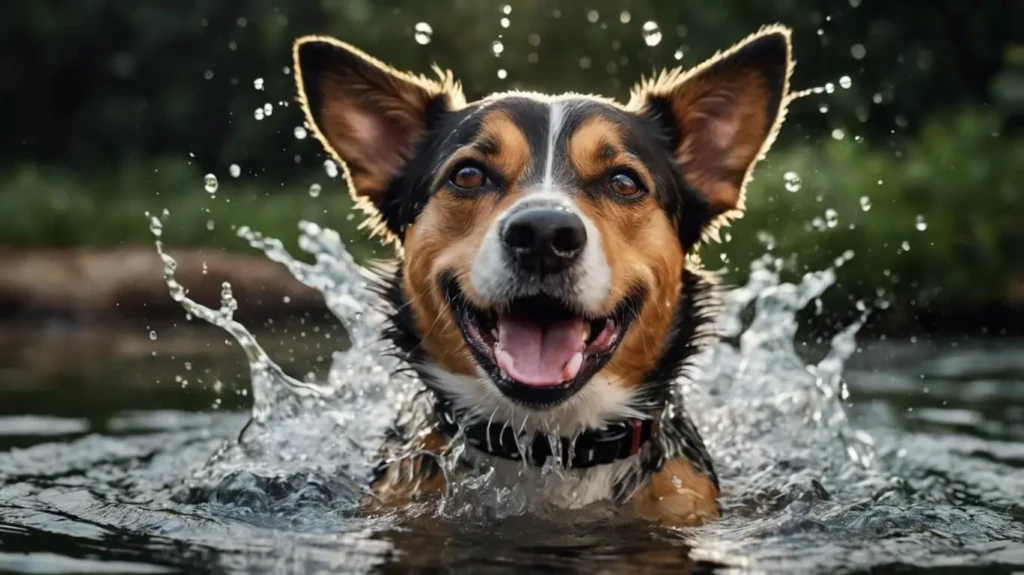
Grooming and Hygiene Care
Brushing and Bathing
Regular brushing and bathing are essential components of your dog’s daily grooming routine. These activities not only help keep your dog looking and smelling good but also contribute significantly to their health by promoting proper skin and coat conditions, reducing shedding, and preventing matting or tangles.
Brushing Your Dog’s Coat
Brushing helps maintain a healthy coat and skin, removes dirt, debris, and loose fur, and stimulates the natural oils in the skin to keep the coat shiny. How often you should brush depends on your dog’s coat type:
- Short-haired dogs (e.g., Beagles, Boxers, Dachshunds) typically require brushing once a week. Their coat doesn’t mat easily, but regular brushing helps to remove loose hair and keep their coat smooth.
- Long-haired dogs (e.g., Shih Tzus, Collies, Yorkshire Terriers) need more frequent brushing—two to three times a week—to prevent tangles, mats, and knots. For these dogs, make sure you’re using the right tools, such as a pin brush or slicker brush, to gently detangle their fur.
- Curly-coated dogs (e.g., Poodles, Bichon Frises, Portuguese Water Dogs) require frequent brushing (at least three to four times a week) to prevent their hair from matting and to keep it in good condition.
When brushing, be gentle and patient, especially with dogs that have sensitive skin or are prone to matting. Use detangling sprays or conditioners designed for dogs to help smooth out knots and prevent breakage.
Brushing also provides an opportunity to check for skin issues, such as cuts, rashes, or flea infestations. If you notice any unusual bumps, sores, or irritations, consult your veterinarian.
Bathing Your Dog
Bathing frequency varies by breed, activity level, and whether your dog has skin sensitivities. In general, most dogs don’t need frequent baths—once every 4–6 weeks is sufficient for most breeds. Bathing too often can strip the coat of its natural oils, leading to dry, itchy skin. However, some dogs with oily skin or certain conditions (like skin infections or allergies) may require more frequent baths.
Use a dog-specific shampoo that is gentle on their skin and free of harsh chemicals. Human shampoos can disrupt the pH balance of a dog’s skin and cause irritation. For dogs with special needs (such as sensitive skin or allergies), there are hypoallergenic or medicated shampoos available that are designed to soothe and protect their skin.
When bathing your dog:
- Wet the coat thoroughly with lukewarm water (not too hot or cold).
- Apply a small amount of shampoo, starting from the neck down, and lather gently. Avoid getting shampoo in their eyes or ears.
- Rinse thoroughly to ensure no product is left behind, as residue can cause itching or irritation.
- Dry your dog properly with a towel, and if they’re comfortable with it, use a blow dryer set on low heat to dry their coat completely.
Remember that overbathing can cause dryness and irritation, so only bathe your dog when necessary. If your dog tends to roll in mud or get into something particularly smelly, a quick bath is a good idea, but don’t overdo it.
Tips for Brushing and Bathing
- Start grooming early: If you have a puppy, start introducing them to the grooming process at an early age. This helps them become familiar with the routine and reduces anxiety during future grooming sessions.
- Make it a positive experience: Use praise and treats to reinforce good behavior during grooming. If your dog seems anxious or restless, take breaks to keep things calm and stress-free.
- Use the right grooming tools: Invest in high-quality grooming tools that are suited to your dog’s coat type. A comb or dematting tool for longer coats and a rubber curry brush for short coats can make the process easier and more effective.
By maintaining a regular brushing and bathing routine, you not only keep your dog looking good but also contribute to their overall health and happiness. Well-maintained coats are less likely to become tangled, matted, or harbor parasites like fleas or ticks, making it an important part of your dog’s daily care.
Dental Care Routine
Just like humans, dogs need regular dental care to keep their teeth and gums healthy. A proper dental care routine helps prevent dental diseases, such as tartar buildup, gum disease, and bad breath—all of which can lead to more serious health problems if left untreated, including infections that can affect the heart, kidneys, and liver.
Why Dental Care is Important for Dogs
Dental health is often overlooked, but it’s an integral part of your dog’s overall well-being. Poor oral hygiene can cause painful dental issues, like tooth decay, abscesses, and gum inflammation, which may lead to difficulty eating, irritability, or even systemic health problems. In fact, studies show that 70% of dogs over the age of 3 suffer from some form of dental disease. The earlier you establish a dental routine, the better the chances of preventing severe oral health issues.
Brushing Your Dog’s Teeth
The most effective way to maintain your dog’s oral hygiene is through regular tooth brushing. Just like humans, dogs need their teeth brushed at least two to three times a week to remove plaque and prevent tartar buildup. For optimal results, brushing every day is ideal.
Start slowly if your dog isn’t used to tooth brushing. It’s important to create a positive experience, so begin by getting them comfortable with having their mouth touched before introducing the toothbrush. Here’s how you can start:
- Get the Right Toothbrush and Toothpaste: Use a toothbrush designed for dogs, such as a soft-bristled toothbrush or finger brush, which can be more comfortable for them. Never use human toothpaste—it contains ingredients (like xylitol) that are toxic to dogs. Instead, purchase a dog-safe toothpaste, which comes in flavors like chicken, peanut butter, or beef that your dog will find more appealing.
- Introduce the Brush Gradually: Gently massage your dog’s gums with your finger before introducing the brush. This will help your dog get used to the sensation.
- Brush Gently: Once your dog is comfortable, start brushing their teeth. Focus on the outside surfaces of the teeth, as this is where plaque and tartar are most likely to accumulate. Use circular motions and avoid brushing too hard, as this can irritate their gums.
- Praise and Reward: Always praise your dog during and after the session, and offer a small treat to make brushing a positive experience.
Dental Chews and Toys
In addition to brushing, dental chews and toys are an excellent way to help maintain your dog’s oral health. These treats are designed to clean teeth and massage gums while your dog chews. Look for treats that are vet-approved and specifically made for dental health. Some popular options include Greenies, Virbac C.E.T. Enzymatic Chews, or Whimzees.
These chews help reduce plaque and tartar buildup and are especially beneficial for dogs that resist brushing. Rubber chew toys, such as those made by KONG or Nylabone, also promote good dental health by scraping the teeth as your dog plays.
Regular Veterinary Checkups
Even with a good dental routine at home, regular vet checkups are crucial for maintaining your dog’s oral health. Your veterinarian will examine your dog’s teeth and gums during their routine exams and may recommend professional cleanings if necessary. These cleanings remove built-up tartar below the gumline, an area that is hard to reach with home brushing. Depending on your dog’s breed and age, your vet may recommend a cleaning every 6–12 months.
Some dogs are prone to dental issues due to genetics or breed characteristics. For example, small breed dogs like Chihuahuas or Yorkies are more susceptible to periodontal disease due to their crowded teeth. In such cases, your vet might suggest a more frequent cleaning schedule or additional dental products.
Signs of Dental Problems
It’s important to be aware of the signs of dental issues so you can take action early. Look out for:
- Bad breath (a sign of halitosis or gum disease)
- Red or swollen gums
- Excessive drooling
- Difficulty eating or chewing
- Loose or missing teeth
- Pawing at the mouth or face
If you notice any of these signs, it’s essential to consult your vet right away for an evaluation and potential treatment.
By establishing a consistent dental care routine, you’ll not only help prevent painful dental conditions but also improve your dog’s overall health and quality of life. With the right tools, treats, and veterinary support, you can keep your dog’s smile bright and healthy for years to come!
Nail Trimming and Ear Cleaning
Maintaining your dog’s nail trimming and ear cleaning routines is just as important as regular brushing and bathing. Both of these grooming tasks are often overlooked but play a key role in your dog’s overall health and comfort. Regular nail trimming prevents painful issues like ingrown nails, while ear cleaning helps to avoid infections that can lead to discomfort and hearing problems.
Nail Trimming
Nail trimming is an essential part of your dog’s grooming routine. Overgrown nails can lead to a variety of problems, such as painful walking, scratching injuries, and even damage to their paws or furniture. In severe cases, excessively long nails can cause structural issues with their joints and gait.
How Often Should You Trim Your Dog’s Nails?
- Active dogs who regularly walk on hard surfaces like pavement tend to wear down their nails naturally, meaning they may need trimming less frequently.
- Less active dogs or those who spend more time on soft surfaces (like carpet or grass) may require more frequent trims, typically every 2–4 weeks.
- Older dogs or those with joint issues might also benefit from more frequent trimming to prevent nails from growing too long, which can affect their balance.
How to Trim Your Dog’s Nails
- Use the Right Tools: Invest in quality dog nail clippers, either scissor-style or guillotine-style, that are appropriate for your dog’s size and nail thickness. For larger dogs, a nail grinder can also be an option.
- Get Your Dog Comfortable: Some dogs are apprehensive about nail trimming, so it’s important to start by gradually getting them accustomed to having their paws touched. Use treats and positive reinforcement to make the experience more enjoyable.
- Identify the Quick: The “quick” is the pink area inside the nail that contains blood vessels. Avoid cutting this part, as it can cause bleeding and pain. If your dog has clear nails, the quick is easier to spot, but for dark nails, trim in small increments to be safe.
- Trim Slowly and Steadily: Clip small portions of the nail at a time. If your dog is nervous, take breaks between cuts to reduce stress.
- Use Styptic Powder: If you accidentally cut the quick, apply styptic powder to stop the bleeding. This is a helpful precaution to keep on hand during nail trimming sessions.
Ear Cleaning
Routine ear cleaning is an important aspect of your dog’s grooming regimen. Dirty or infected ears can cause discomfort, itching, odor, and even hearing loss. Some breeds, particularly those with floppy ears like Cocker Spaniels, Basset Hounds, and Beagles, are more prone to ear infections due to reduced airflow in their ears, which can trap moisture and debris.
Signs Your Dog May Need Their Ears Cleaned
- Odor: A strong, unpleasant smell can indicate an infection or buildup of wax and bacteria.
- Redness or swelling: Infected or irritated ears will often appear red or inflamed.
- Excessive scratching or head shaking: If your dog is frequently scratching their ears or shaking their head, they might be experiencing discomfort due to dirt, wax, or infection.
- Discharge: Thick or dark discharge from the ear is a clear sign that cleaning or veterinary attention is required.
How to Clean Your Dog’s Ears
- Use Dog-Specific Ear Cleaner: Always choose an ear cleaner that is formulated specifically for dogs. Avoid using cotton swabs or products designed for humans, as they can cause injury. Ear cleaners for dogs are designed to break down wax and debris gently without harming the ear canal.
- Prepare Your Dog: Make sure your dog is calm before beginning the ear cleaning process. You can lay them on their side or have them sit in front of you—whichever is most comfortable for both of you. If your dog resists ear cleaning, start with short sessions and gradually increase the length of time.
- Apply the Ear Cleaner: Gently lift the ear flap and apply a few drops of ear cleaner into the ear canal. Gently massage the base of the ear to help the cleaner break up the wax or debris.
- Wipe Away Dirt: Use a soft cotton ball or gauze pad to wipe the inside of the ear and remove any excess cleaner, dirt, or wax. Avoid pushing anything deep into the ear canal, as this can cause injury.
- Dry the Ears: After cleaning, make sure to dry the inside of your dog’s ears with a clean cotton ball or towel. Moisture trapped in the ear canal can promote bacterial or yeast infections.
- Regular Checkups: Even if your dog doesn’t seem to have any visible ear issues, cleaning their ears about once a month can help maintain optimal ear health. For dogs with floppy ears or those prone to infections, you might need to clean their ears more frequently (every 2 weeks).
Preventing Ear Infections
- Keep your dog’s ears dry, especially after baths or swimming. Use a dry cotton ball to wipe their ears after these activities to prevent moisture buildup.
- Regular checkups with your vet will help spot any ear problems early. If your dog seems to have frequent ear infections, ask your vet for recommendations on specialized ear cleaning products or treatments.
Tips for Successful Grooming
- Stay Calm and Patient: Some dogs may find nail trimming or ear cleaning stressful, so always be patient and calm. If they seem particularly anxious, take breaks or try shorter sessions to avoid overwhelming them.
- Positive Reinforcement: Praise your dog and offer a treat after grooming sessions to create positive associations with these activities.
- Consult Your Veterinarian: If you’re unsure about how to clean your dog’s ears properly or how to trim their nails, don’t hesitate to ask your veterinarian for guidance. They can also show you proper techniques and recommend tools.
By incorporating regular nail trimming and ear cleaning into your dog’s care routine, you can help ensure their comfort and prevent painful conditions from developing. These grooming tasks are relatively simple but have a huge impact on your dog’s health and well-being. Plus, your dog will be happier and healthier with regular care!
Emotional and Mental Well-being
Social Interaction and Bonding
One of the most essential aspects of dog care is fostering a strong bond through social interaction. Dogs are social animals that thrive on companionship and interaction, not only with their human families but also with other animals. Positive socialization experiences help ensure that your dog grows into a well-adjusted, confident, and emotionally healthy pet. Whether it’s through playtime, training, or simple day-to-day interactions, nurturing your relationship with your dog builds trust and creates a positive environment for both of you.
Why Social Interaction is Crucial for Dogs
Social interaction is key to a dog’s emotional well-being. Dogs that have a strong bond with their owners tend to be more obedient, calm, and less anxious. Consistent and positive socialization can help prevent behaviors such as aggression, separation anxiety, and fear-based reactions. Additionally, it can promote mental stimulation, reduce stress, and increase your dog’s overall happiness.
Dogs who are deprived of adequate socialization may become antisocial, fearful, or develop problematic behaviors, such as excessive barking, destructive chewing, or even aggression toward people or other dogs. Ensuring that your dog gets enough positive social experiences is vital for their development, particularly during their early years.
Ways to Bond with Your Dog
Building a strong bond with your dog is a process that involves consistency, patience, and positive experiences. Here are several effective ways to strengthen your relationship with your pet:
- Quality Time Together: Spend time with your dog every day. Whether it’s a leisurely walk, a play session, or just sitting together, quality time helps reinforce your relationship and allows your dog to feel more connected to you. Dogs are incredibly intuitive, so they can sense when you’re calm, happy, or stressed, and your mood can directly impact theirs. Making time to relax together will help you bond on a deeper level.
- Play and Fun Activities: Playtime is a fantastic way to engage with your dog while having fun. Playing games like fetch, tug-of-war, or hide and seek gives your dog an outlet to express their energy, and it helps to create positive associations with you. For dogs with high energy, interactive games can provide both mental and physical stimulation. Consider using interactive toys, such as treat-dispensing puzzles, which challenge your dog’s problem-solving abilities and reward them for their effort.
- Training Sessions: Training your dog is not just about teaching them commands—it’s also an opportunity to bond. Positive reinforcement training strengthens the communication between you and your dog, builds trust, and provides mental stimulation. Use treats and praise to reinforce good behavior, and keep training sessions short and fun. Teaching your dog new tricks or reinforcing basic commands like “sit,” “stay,” and “come” can be a great way to build mutual respect and improve their behavior.
- Cuddles and Physical Affection: Many dogs love to cuddle and be physically close to their owners. Petting your dog, giving belly rubs, or even just lying next to them creates a sense of security and reinforces your relationship. However, it’s important to remember that not all dogs are as affectionate or enjoy being handled in the same way. Always pay attention to your dog’s body language and respect their personal space, especially if they seem uncomfortable with too much physical attention.
- Exploration and Adventures: Taking your dog on new adventures is an exciting way to bond and create memorable experiences. Whether it’s a trip to the park, a hike through the woods, or a visit to the beach, new experiences provide a wealth of sensory input that will keep your dog engaged and strengthen your bond. Exploring together also gives your dog an opportunity to trust you in unfamiliar situations, further reinforcing the connection.
Socialization with Other Dogs and People
In addition to bonding with you, it’s crucial that your dog is well-socialized with other dogs and people. Proper socialization helps your dog become comfortable and confident in various situations, preventing fear-based reactions and promoting good behavior in public settings.
- Puppy Socialization: The best time to start socializing your dog is during the puppy stage (before 16 weeks), as this is when they are most receptive to learning and experiencing new things. Exposing them to different environments, people, and other dogs during this time helps them grow into well-adjusted adults. Puppy socialization classes are a great way to introduce your dog to new experiences in a controlled setting.
- Adult Dog Socialization: If you adopt an adult dog that hasn’t been properly socialized, it may take more time and patience. Slowly expose them to new people, dogs, and environments, making sure each experience is positive. Using leash-controlled introductions and rewarding calm behavior can help alleviate fears and encourage good interactions.
- Dog Parks and Playgroups: Once your dog is comfortable with other dogs, visiting a dog park or joining a playgroup can be an excellent way to encourage social interaction. These settings allow your dog to engage in off-leash play and explore interactions with other dogs in a supervised environment. Be mindful of your dog’s comfort level and always supervise interactions to ensure positive experiences.
Signs of a Well-Bonded Dog
- Affection and Loyalty: A dog that is well-bonded with its owner will show affectionate behaviors such as wagging their tail, licking, or snuggling. They will seek your attention, whether it’s during playtime or simply lying next to you while you relax.
- Responsive to Commands: Dogs that trust and respect their owners will typically be more responsive to commands and training. When your dog looks to you for guidance and responds positively to commands, it’s a sign that they feel secure in your relationship.
- Relaxed and Comfortable: A well-bonded dog will often display relaxed body language, such as soft eyes, relaxed ears, and a wagging tail. They’ll also be more likely to let down their guard around you, knowing they’re safe and protected.
Fostering a strong relationship through social interaction and bonding is crucial to a dog’s emotional and physical well-being. The stronger the bond you share, the better your dog will respond to you and the more joy you’ll both experience. Whether it’s through training, play, physical affection, or socialization with other dogs, consistent positive interactions will help create a healthy, happy relationship that lasts a lifetime.
Toys and Puzzle Games
Dogs are naturally curious and energetic creatures that need a variety of activities to keep them engaged and mentally stimulated. Toys and puzzle games are not just fun, they are essential tools in fostering a dog’s mental stimulation, problem-solving skills, and overall happiness. These activities provide your dog with the right outlet for their energy, help alleviate boredom, and can even reduce undesirable behaviors like excessive barking or destructive chewing.
Why Toys and Puzzle Games are Important
Toys and puzzles offer several important benefits to dogs:
- Mental Stimulation: Dogs need intellectual challenges just as much as they need physical exercise. Puzzle toys stimulate your dog’s problem-solving abilities, helping them stay mentally sharp, especially for breeds that are highly intelligent, such as Border Collies, Poodles, and German Shepherds.
- Reduce Anxiety and Boredom: Without proper mental stimulation, dogs can easily become bored or frustrated. This often leads to destructive behaviors, such as chewing furniture, digging, or excessive barking. Providing a variety of toys or puzzles can redirect their energy into more appropriate outlets, leading to a calmer, more content dog.
- Prevent Behavioral Issues: Boredom and lack of stimulation can lead to behavioral issues like hyperactivity, separation anxiety, or destructive chewing. Keeping your dog entertained with toys and puzzles can prevent these issues from arising and ensure they stay happy and engaged.
- Physical Exercise: Active play with toys, such as fetching a ball or tug-of-war, also provides valuable physical exercise, helping your dog maintain a healthy weight and muscle tone. Interactive play can be a great way to bond while keeping your dog physically fit.
- Teething Relief for Puppies: Puppies, in particular, go through a teething phase that can make them want to chew on anything they can find. Providing them with appropriate teething toys can help alleviate discomfort and keep them from chewing on furniture or shoes.
Types of Toys for Dogs
There is a wide variety of toys available to suit every dog’s needs, preferences, and activity levels. Here are some types of toys that can benefit your dog:
- Chew Toys: Chew toys are essential for dogs of all ages, especially puppies and teething dogs. They help satisfy a dog’s natural need to chew, promote dental health by scraping off plaque, and provide an outlet for their energy. Durable rubber toys like KONG toys, Nylabones, and Benebones are great choices that can withstand intense chewing.
- Fetch Toys: Fetch toys, such as balls, frisbees, or flying discs, are perfect for high-energy dogs who love to run and chase. These toys provide a fun and easy way to get your dog moving while building up their stamina and reinforcing the bond between you and your dog through interactive play. Make sure to choose toys that are the right size for your dog to avoid choking hazards.
- Tug Toys: Tug-of-war games are an excellent way to engage with your dog and provide physical exercise. Rope toys and rubber tug toys are particularly great for tug-of-war, and this activity can help build your dog’s strength while allowing you to bond in a playful way. Always supervise tug games to ensure they don’t get too rough, and teach your dog to release the toy on command to maintain good behavior.
- Stuffed Plush Toys: For dogs that enjoy cuddling or carrying things around, plush toys can provide comfort and fun. These toys often come with squeakers inside, making them extra engaging for dogs who love noise. However, be mindful that some dogs can be hard on plush toys, so make sure the stuffing is non-toxic if your dog tends to tear them apart.
- Interactive Toys: Interactive toys are designed to engage your dog’s brain. These toys often require your dog to figure out how to retrieve a treat or access a hidden compartment. They can include toys like treat-dispensing balls, puzzle feeders, and activity mats. These types of toys can keep your dog busy for extended periods and offer great enrichment for dogs who need more than just physical exercise.
Puzzle Games and Treat-Dispensing Toys
Puzzle games and treat-dispensing toys are a great way to engage your dog mentally, especially if they tend to get bored quickly. These toys require your dog to figure out a task, such as moving pieces, flipping levers, or solving complex problems, to get to a hidden treat. These games help improve your dog’s problem-solving skills and can also help prevent cognitive decline in older dogs.
- Puzzle Feeders: Puzzle feeders are a type of slow feeder designed to make mealtime more challenging. Instead of simply gobbling down their food, your dog has to work through a series of puzzles or obstacles to get to their food. This not only slows down their eating but also provides a form of mental exercise.
- Treat-Dispensing Balls: Toys like KONG Wobbler or Bob-A-Lot are treat-dispensing balls that release food when your dog rolls or pushes them. These interactive toys keep your dog engaged while rewarding them with treats, which makes them a great option for mental stimulation and reducing boredom.
- Puzzle Boards: Puzzle boards or activity mats are designed with various compartments and sliding pieces where treats can be hidden. Your dog must figure out how to move the pieces to reveal the food. These games can range in complexity, making them suitable for puppies all the way up to senior dogs.
How to Choose the Right Toys and Puzzles for Your Dog
Selecting the right toys for your dog depends on several factors, including their size, age, energy level, and chewing habits. Here are some tips for choosing the best toys for your pet:
- Consider Your Dog’s Size: Choose toys that are appropriately sized for your dog. Toys that are too small can present a choking hazard, while toys that are too large may not engage your dog effectively.
- Durability: If your dog is an aggressive chewer, look for durable toys made of hard rubber or nylon. These materials can withstand heavy chewing and last longer.
- Age-Appropriate Toys: Puppies may enjoy softer, chewable toys to ease teething discomfort, while older dogs may prefer more complex puzzle toys. Adjust the type of toys you offer based on your dog’s age and stage of life.
- Activity Level: Active dogs need toys that promote physical exercise, such as fetch toys or tug ropes, while less active dogs may enjoy puzzle toys or plush toys for comfort.
Incorporating Toys and Puzzles into Your Routine
Make sure to regularly rotate your dog’s toys to keep things fresh and exciting. Introduce new toys or puzzle games every few weeks to maintain your dog’s interest. Always supervise playtime, especially with new toys, to ensure safety.
If you have a particularly energetic dog, you can use puzzle toys and games as a way to tire them out mentally. After an engaging play session with a puzzle game, your dog may be more relaxed and calm for the rest of the day.
Providing your dog with a variety of toys and puzzle games can significantly enhance their well-being. These tools engage both their mind and body, ensuring they stay active, happy, and healthy. By integrating toys and puzzles into their routine, you’re helping prevent boredom, promoting good behavior, and enriching your dog’s life in a fun and fulfilling way.
Training and Routine
Training and maintaining a consistent daily routine are essential for creating a happy, well-behaved dog. A structured environment helps your dog understand what is expected of them, fosters good behavior, and creates a sense of security and stability. Consistency in training and routine is key to building a strong bond between you and your dog, ensuring that they thrive in both social and household settings.
Why Training is Important for Dogs
Training your dog goes beyond just teaching them commands. It is an essential component of their emotional, mental, and social development. A well-trained dog is easier to manage, safer to be around, and more confident in various situations. Here’s why training is so crucial:
- Behavioral Control: Training helps teach your dog appropriate behaviors and eliminates undesirable habits like jumping up, excessive barking, and destructive chewing. With clear, consistent training, your dog learns boundaries and what is expected of them.
- Strengthens the Human-Dog Bond: Training isn’t just about teaching commands—it’s about building communication and trust between you and your dog. Positive reinforcement training creates a rewarding experience for both of you, making it easier to strengthen your relationship.
- Mental Stimulation: Training provides your dog with mental challenges that engage their brain, helping to prevent boredom and promote cognitive health. Whether it’s learning basic commands, new tricks, or solving puzzles, mental stimulation is as important as physical exercise for your dog’s overall well-being.
- Safety and Socialization: Proper training teaches your dog to respond to commands like “sit,” “stay,” “come,” and “leave it,” which can be life-saving in dangerous or stressful situations. It also helps your dog interact safely with other dogs, pets, and people, ensuring positive social experiences.
Types of Training for Dogs
There are many different types of training that can help shape your dog’s behavior and improve your relationship. Here are a few key training techniques:
- Basic Obedience Training: The foundation of dog training, basic obedience training teaches your dog essential commands like:
- Sit
- Stay
- Come
- Down
- Leave it
- Crate Training: Crate training is an essential aspect of housebreaking and providing a safe space for your dog. A properly crate-trained dog will view their crate as a comfortable and secure area, helping with separation anxiety and preventing destructive behaviors when left alone. It’s important to use positive reinforcement to ensure the dog associates their crate with something positive (treats, toys, etc.).
- Potty Training: Potty training is essential for teaching your dog where it’s appropriate to relieve themselves. Consistency, patience, and positive reinforcement are key components of successful potty training. Take your dog outside frequently, especially after meals, naps, and playtime, and reward them immediately after they go outside.
- Leash Training: Leash training is important for safe walks and outings. Teaching your dog to walk politely on a leash without pulling or lunging helps prevent accidents and makes walks more enjoyable for both you and your dog. Start by getting your dog used to wearing a collar or harness and gradually progress to walking on a leash while rewarding good behavior.
- Behavioral Training: If your dog exhibits specific behavioral issues such as separation anxiety, barking, or resource guarding, behavioral training can address these problems. Working with a professional trainer may be helpful in these cases, as they can provide specialized techniques and strategies to modify these behaviors.
Routine and Consistency in Dog Care
Just as training is important, establishing a daily routine for your dog is equally essential. Dogs thrive on consistency, as it provides them with a sense of security and helps manage their expectations. A daily routine creates structure in your dog’s life and reduces stress by ensuring they know when to expect certain activities, such as feeding, walks, and playtime.
Here’s why establishing a routine is vital for your dog:
- Reduces Anxiety: Dogs that don’t know what to expect from day to day may experience anxiety or stress. A consistent routine helps alleviate this by providing your dog with predictability. For example, knowing when it’s time for their walk or when to expect meals reduces uncertainty and helps your dog feel safe.
- Promotes Healthy Habits: A structured routine promotes healthy habits such as regular feeding, exercise, and sleep. Having set times for these activities helps regulate your dog’s energy levels, digestion, and overall health.
- Encourages Good Behavior: When your dog knows what to expect and when, they’re less likely to engage in unwanted behaviors. For example, if your dog learns that after a walk comes playtime, they may be less likely to exhibit hyperactive behavior or engage in destructive chewing while waiting.
- Helps with Training: A routine supports your dog’s training progress by providing consistent opportunities for reinforcement. If you stick to a regular training schedule and ensure your dog has set times for learning and play, they are more likely to retain the commands and behaviors you’ve taught them.
Tips for Establishing a Successful Routine
To create a successful routine for your dog, consider the following tips:
- Feeding Schedule: Feed your dog at the same time each day. A consistent feeding schedule helps regulate digestion and can prevent overeating or picky eating behaviors. Dogs generally do well with two meals per day, but the specific feeding schedule will depend on your dog’s age, size, and breed.
- Exercise and Play: Set aside time every day for physical activity, such as walks, runs, or playtime. The duration and intensity of the exercise will depend on your dog’s age, breed, and energy level. High-energy breeds like Border Collies or Labradors may need more exercise than smaller or less active dogs like Chihuahuas or Basset Hounds.
- Training Time: Incorporate short, positive training sessions into your daily routine. Training doesn’t have to be lengthy—just 10-15 minutes a day is often enough to reinforce basic commands or teach new tricks. Consistency is key, so try to train at the same time every day.
- Rest and Relaxation: Dogs need time to rest and recharge, just like humans. Establish a quiet space for your dog where they can retreat to relax, and make sure they have a comfortable place to sleep. Most dogs need around 12-16 hours of sleep per day, depending on their age and activity level.
- Socialization: Incorporate time for socialization with other dogs or people into your routine. Whether it’s a trip to the dog park or a playdate with a friend’s dog, regular social interaction is important for your dog’s social development and behavior.
- Adjusting the Routine: As your dog grows and ages, their routine may need to be adjusted. Puppies, adult dogs, and senior dogs all have different needs in terms of exercise, sleep, and training. Pay attention to how your dog responds to the routine, and make adjustments as necessary.
Dealing with Challenges in Training and Routine
While establishing a routine and training regimen is important, challenges may arise along the way. It’s crucial to remain patient and consistent when facing difficulties. If your dog is struggling with a particular command or behavior, consider adjusting your approach by using more positive reinforcement, breaking down tasks into smaller steps, or seeking advice from a professional trainer.
By combining training with a consistent daily routine, you help create a well-rounded, well-behaved dog who feels secure, happy, and confident in their environment. Consistency is the cornerstone of successful training, and establishing a solid routine ensures that your dog’s needs are met while promoting a strong and positive bond between you both.
Conclusion
Caring for a dog involves much more than simply providing food and shelter—it is about nurturing their physical, mental, and emotional well-being to ensure they live a happy, healthy life. From offering a balanced diet and maintaining a consistent routine to providing plenty of playtime, training, and social interaction, every aspect of care plays a crucial role in your dog’s development.
By focusing on daily care routines, such as feeding, exercise, grooming, and training, you not only ensure that your dog remains physically fit but also help them build confidence and security in their environment. The bond you form with your dog through consistent training and daily activities creates a sense of trust and loyalty, laying the foundation for a long-lasting and rewarding relationship.
Here are the key takeaways for ensuring your dog receives the best care possible:
- Feeding: Providing high-quality, breed-appropriate food and establishing a regular feeding schedule is essential for your dog’s health and energy. Don’t forget to always provide fresh water throughout the day.
- Exercise and Mental Stimulation: Daily walks, playtime, and interactive toys or puzzle games are vital to maintaining your dog’s physical and mental well-being. Tailor your dog’s exercise routine to their breed, age, and energy level for optimal health.
- Training and Routine: Consistent training and a structured daily routine create a sense of stability and understanding for your dog. It’s crucial to reinforce positive behaviors while also fostering a strong, trusting relationship through training and socialization.
- Grooming and Healthcare: Regular grooming—such as brushing, bathing, nail trimming, and ear cleaning—helps keep your dog looking and feeling their best. Routine veterinary check-ups are also critical in detecting any health concerns early on.
- Social Interaction and Bonding: Dogs are social creatures that thrive on connection and affection. Spend quality time with your dog, whether it’s cuddling, playing, or simply sitting together. This strengthens your bond and supports your dog’s emotional well-being.
By incorporating these essential elements of dog care into your daily life, you can ensure that your dog remains happy, healthy, and content. Dogs give us unwavering loyalty, companionship, and joy, and in return, they deserve to be cared for with love and attention.
As you continue to nurture your dog, remember that every dog is unique, and their needs will evolve as they age. Stay attentive to their changing requirements, whether it’s adjusting their diet, exercise routine, or grooming habits, and always provide them with the care and affection they deserve.
In the end, a well-cared-for dog is a happy dog, and their happiness will, in turn, bring even more joy into your life.
This conclusion ties together the main themes of the blog post, reinforcing the significance of comprehensive care for a dog’s overall health and happiness. It reminds readers that dog care is an ongoing process, requiring both love and attention to ensure their pets thrive at every stage of life.

